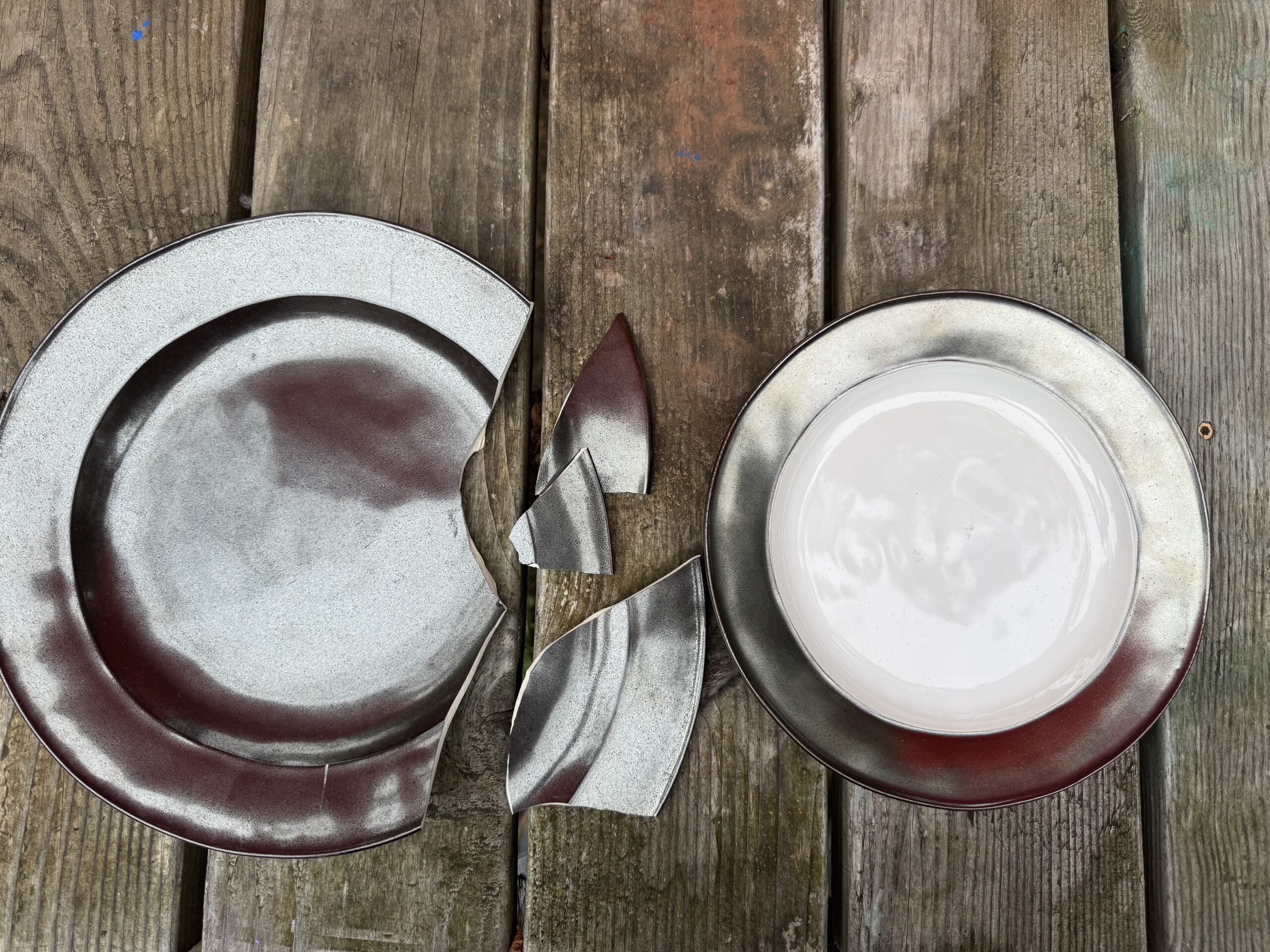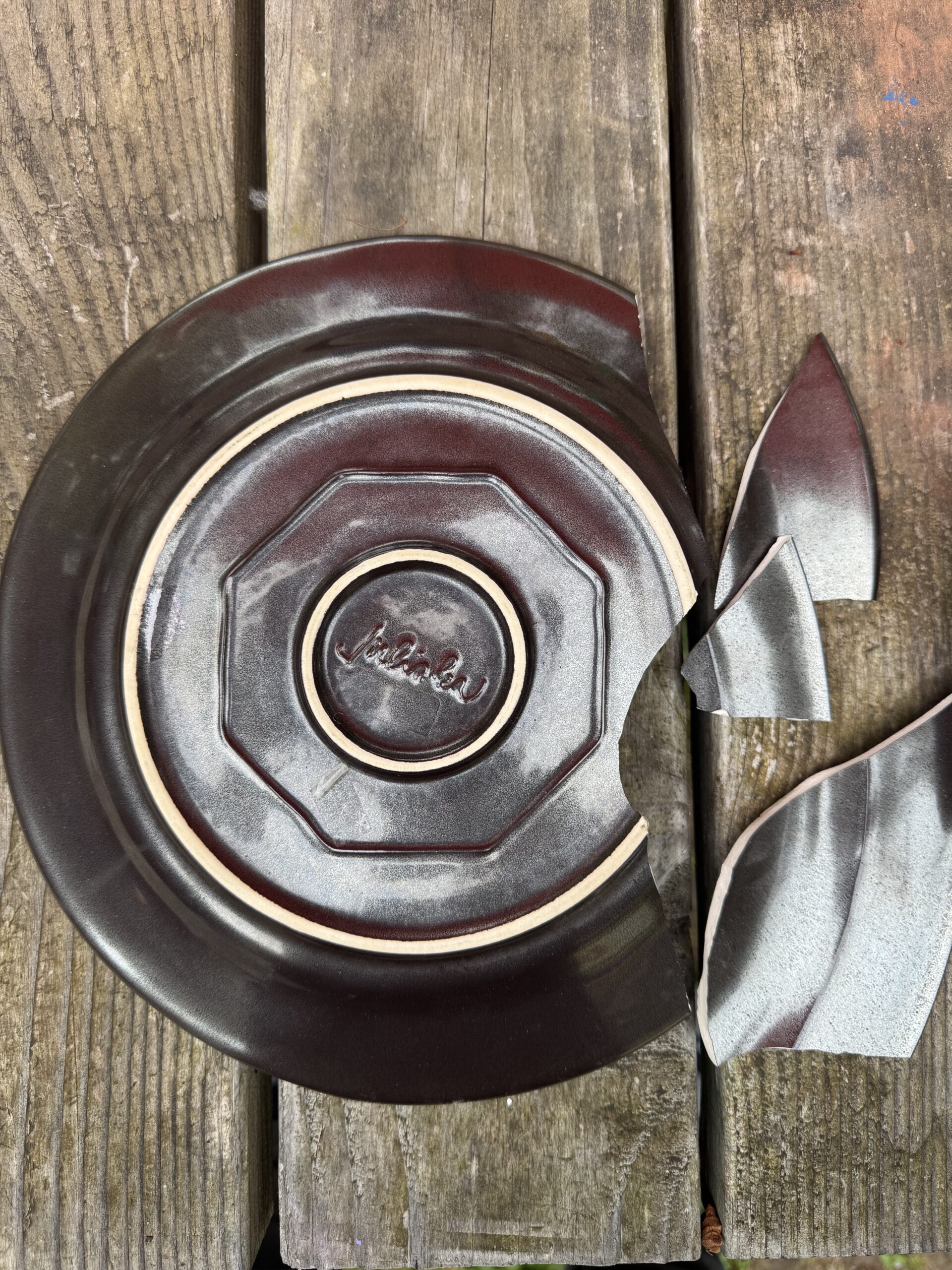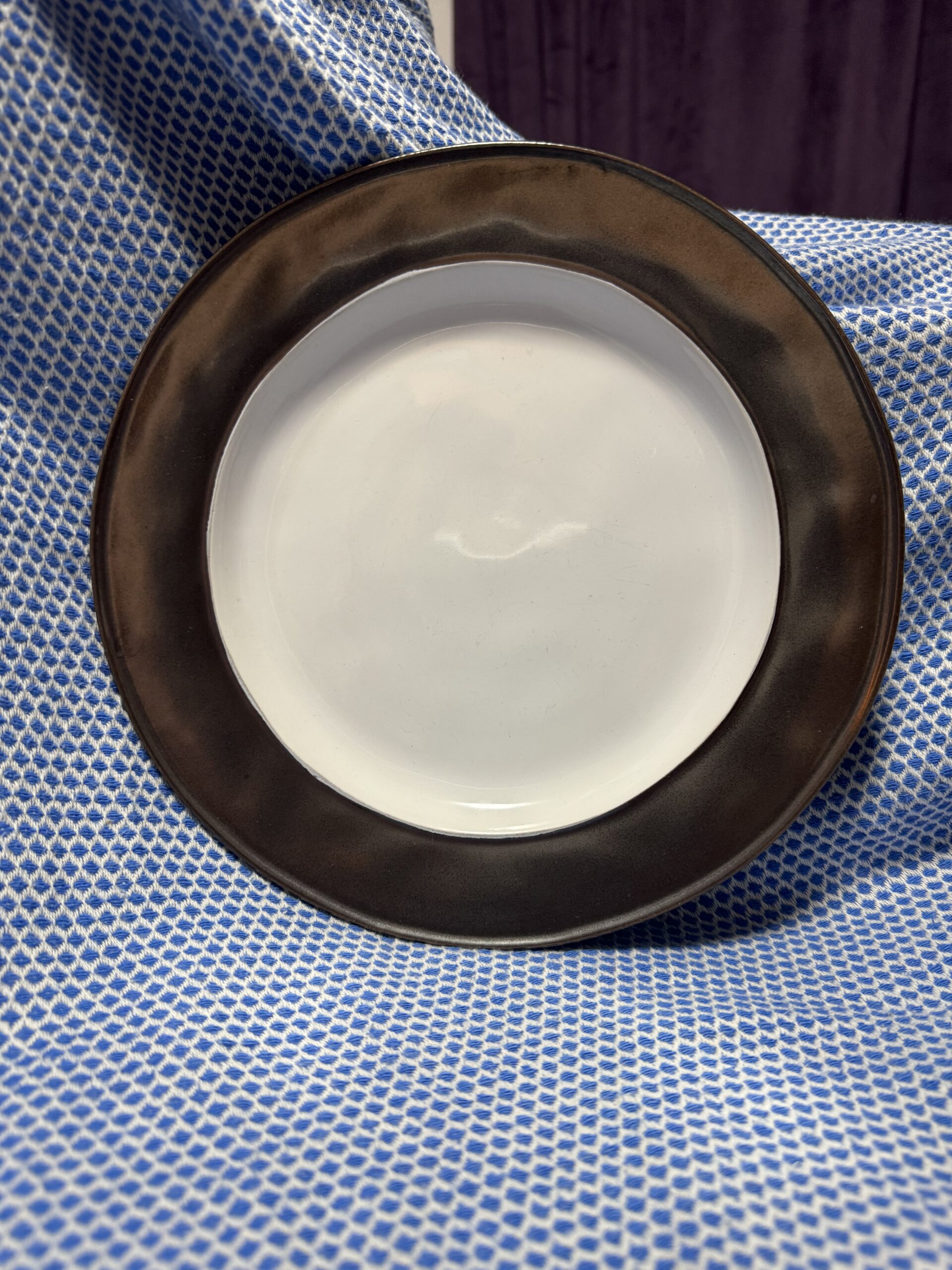XRF Test Results For: Juliska Pewter Stoneware Dishes — Made in Portugal (Bloomingdales, 2017)
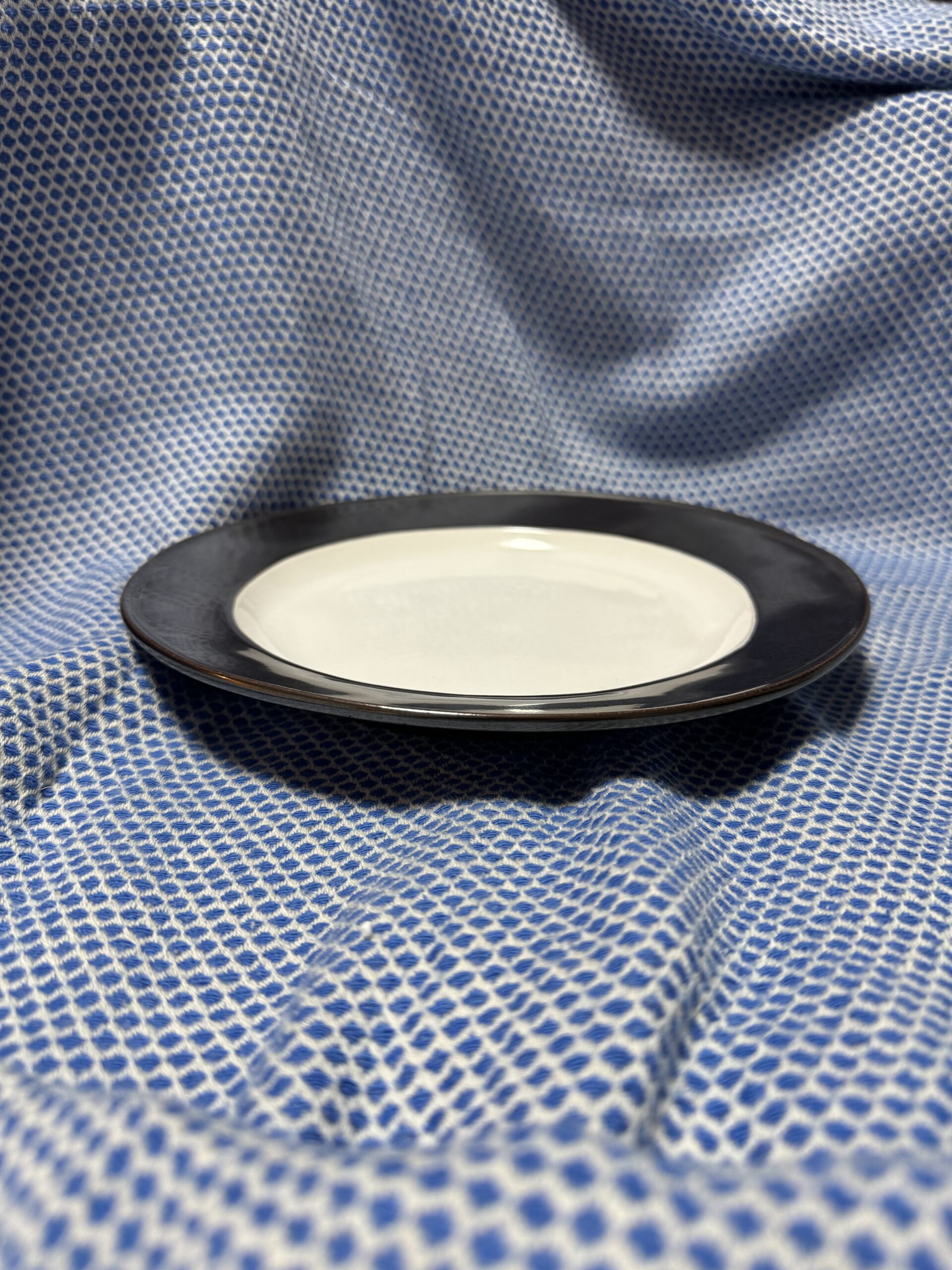
XRF Test Results For The Dishes Pictured
Two dishes were shipped to us from this set, one is a large dinner plate with a continuous silver / pewter colored glaze (which broke in shipping) and a second is a smaller salad plate with silver / pewter trim and a white glazed center of the dish.
As these are fairly recently manufactured dishes (2017) sold by a known major U.S. retailer (Bloomingdales), they were likely leach tested (and confirmed to be “non-leaching”/ to meet current FDA standards for dishware) at the time of manufacture, however with any dishes that test positive for any amount of Lead on the food surface the primary concern is the impacts for potential leaching over time (especially with heavy use and wear, including heating, microwaving and use with acidic foods like tomato sauce, vinegars, and lemon juice).
While these dishes are not likely to present any immediate Lead-poisoning* risk in their current state (they are in good condition and the finish on the two samples that were sent to us for testing do not appear to be particularly worn), they are not an ideal choice long term — especially given the fact that inexpensive Lead-free dishware options are readily available (at Target, Ikea, and even Dollar Store type retailers). You can read more about the concern for Lead-containing glazes on dishware on this link. This link is to our companion website which shares only Lead-free product choices.
*Important Points To Note:
- While there is no safe level of Lead exposure for humans (and we don’t ever recommend using dishes with Leaded glaze on the food surface), we typically are more likely to see Lead-poisoning cases with antique /vintage Lead-contaminated dishes (vintage = dishes that are more than 20 years old), and — with more modern dishware sold by “known” / “reputable” brands — with Lead levels in excess of 10,000 ppm.
- That said, we always discourage the use of any “Made in Portugal” pottery for food use purposes (absent independent testing). Here’s a link with more examples of Made in Portugal pieces to help illustrate the concern.
- It is also important to highlight that the level of Lead found in these dishes is 100% legal, as they are not an item that was marketed and sold as a product intended for use by children (they were not sold expressly as baby dishes), and there is currently no total-Lead-content limit for dishware intended for use by adults.
- Products expressly manufactured for use by children have a Lead limit of 90 ppm in the paint, glaze, or coating and a limit of 100 ppm Lead in the substrate.
- Of course, children DO use dishes, so it is our position that the limit for Lead in dishware (of all types) should be 90 ppm or lower (regardless of the intended user of the product at the time of manufacture and sale).
- To further support this concern, the State of Washington has a new law going into effect in January of 2026 that will restrict the allowable amount of Lead in METAL cookware to 10 parts per million. While metal cookware is not the same as ceramic dishware, having a regulatory action with such a low level of allowable Lead that is governing potential food based exposures at home, is a good place to start. More on that here (June 2025 article from The Guardian).
Full XRF test results for the dishes pictured are below:
Reading #1 – Pewter Colored Food Surface of Large Dinner Plate
60-Second Reading, Readings Repeated Multiple Times To Confirm The Results
- Lead (Pb): 51 +/- 10 ppm [Safe by all standards]
- Cadmium (Cd): non-detect
- Mercury (Hg): non-detect
- Bromine (Br): non-detect
- Chromium (Cr): 619 +/- 213 ppm
- Manganese (Mn): 235 +/- 137 ppm
- Iron (Fe): 42,600 +/- 900 ppm
- Cobalt (Co): 677 +/- 148 ppm
- Nickel (Ni): 204 +/- 58 ppm
- Zinc (Zn): 8,726 +/- 205 ppm
- Antimony (Sb): 17 +/- 11 ppm
- Barium (Ba): 614 +/- 36 ppm
- No other metals detected in consumer goods mode
Reading #2 – Pewter Colored Rim of Food Surface of Small Salad Plate
60-Second Reading, Readings Repeated Multiple Times To Confirm The Results
- Lead (Pb): 297 +/- 20 ppm
- Cadmium (Cd): non-detect
- Mercury (Hg): non-detect
- Bromine (Br): non-detect
- Chromium (Cr): non-detect
- Iron (Fe): 38,700 +/- 800 ppm
- Cobalt (Co): 373 +/- 138 ppm
- Nickel (Ni): 102 +/- 54 ppm
- Zinc (Zn): 6,778 +/- 166 ppm
- Tin (Sn): 13 +/- 8 ppm
- Barium (Ba): 373 +/- 32 ppm
- No other metals detected in consumer goods mode
Note: This second reading is likely higher in Lead as (possibly) the center white glaze (with the higher Lead reading) was applied first, and then the lower-Lead pewter / silver colored glaze was applied on top of at least one layer of the white glaze (see details below). The white glaze is likely Lead-contaminated because Zinc has been used to create the white color, and Zinc is generally heavily Lead-contaminated.
Reading #3 – White Colored Center of Food Surface of Small Salad Plate
60-Second Reading, Readings Repeated Multiple Times To Confirm The Results
- Lead (Pb): 842 +/- 47 ppm
- Cadmium (Cd): non-detect
- Mercury (Hg): non-detect
- Bromine (Br): non-detect
- Chromium (Cr): non-detect
- Iron (Fe): 851 +/- 149 ppm
- Copper (Cu): 294 +/- 45 ppm
- Zinc (Zn): 28,600 +/- 700 ppm
- Zirconium (Zr): 18,800 +/- 50 ppm
- Tin (Sn): 945 +/- 41 ppm
- Barium (Ba): 378 +/- 57 ppm
- Platinum (Pt): 194 +/- 95 ppm
- No other metals detected in consumer goods mode
In Conclusion
The Lead level of the silver / pewter colored larger plates in this set are “safe by all standards” — including the strictest standard currently available — that for products intended for use by children. The white glaze is contaminated with a significant amount of Lead (likely a result of Zinc being used as the primary colorant to achieve the white color). Interestingly enough, based on the testing we have done over the past decade (+) we have noticed that it is very common for modern ceramic pieces marked “Made in Portugal” to test positive for significant levels of Lead in white glazes (here’s another example of that), so it would seem that Portugal-sourced Zinc may be a primary contributing factor to the concerning lead levels in many modern ceramics made in Portugal.
Thank you for reading!
Tamara Rubin
Owner — Lead Safe Mama, LLC
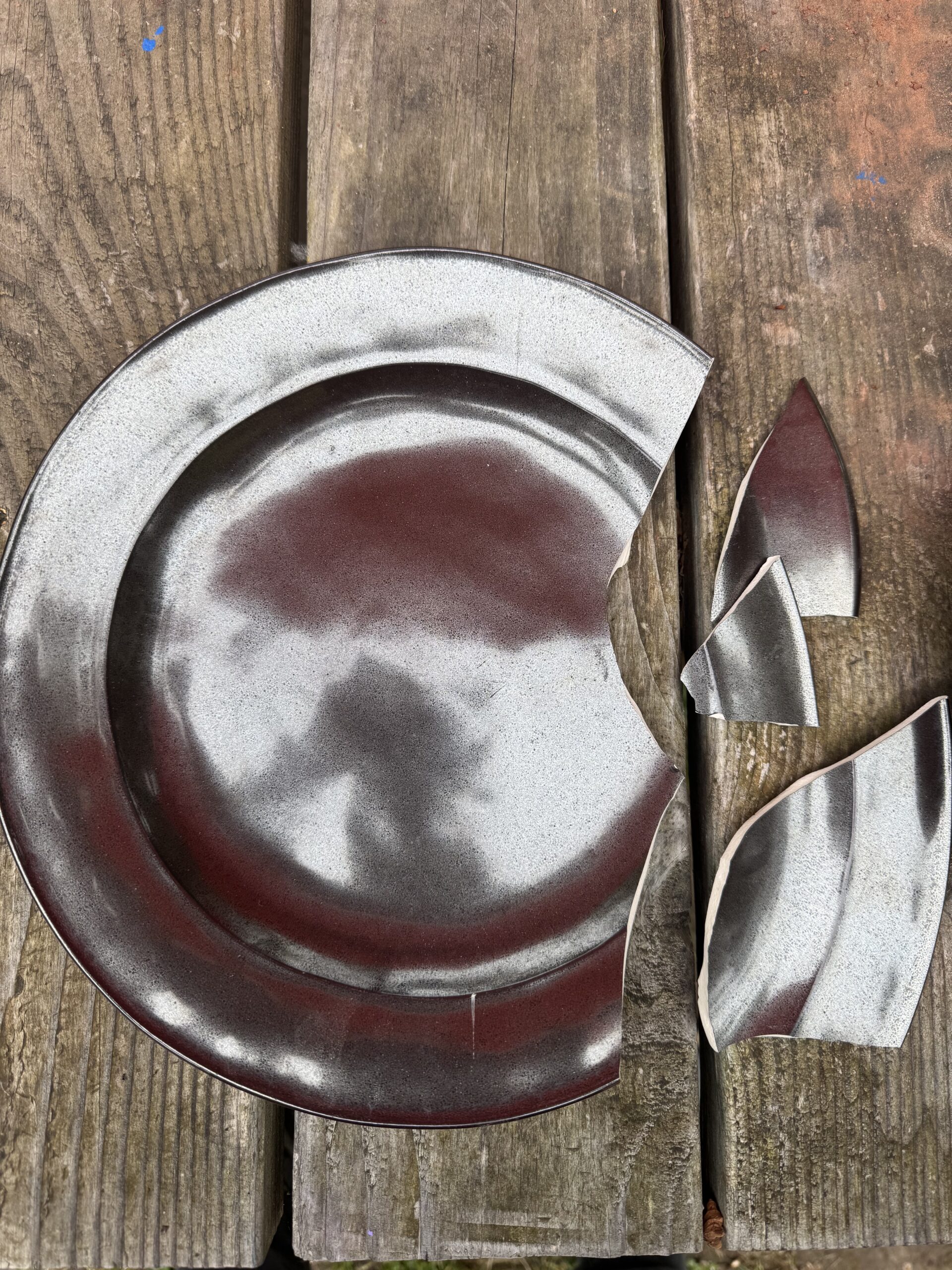

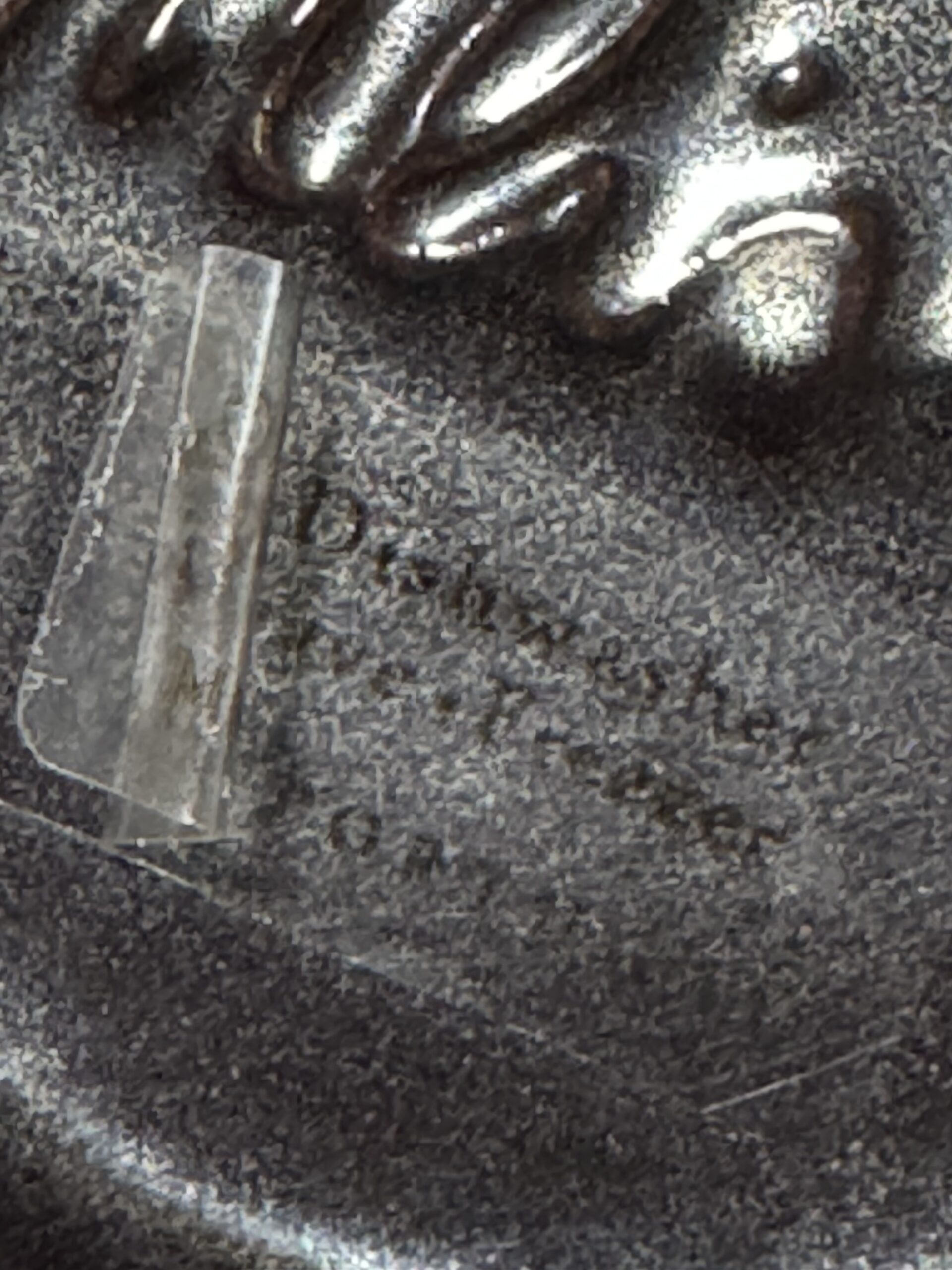
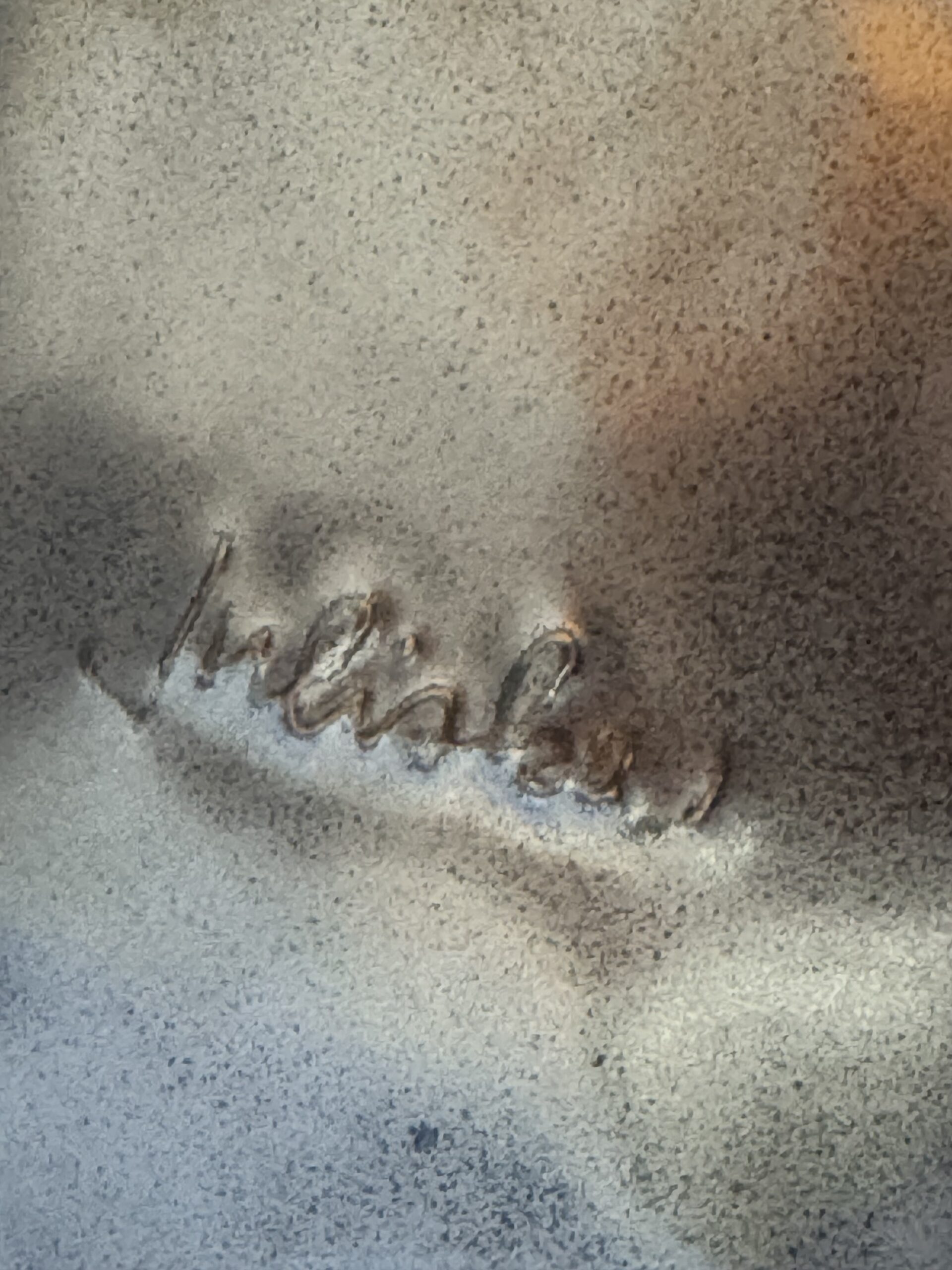

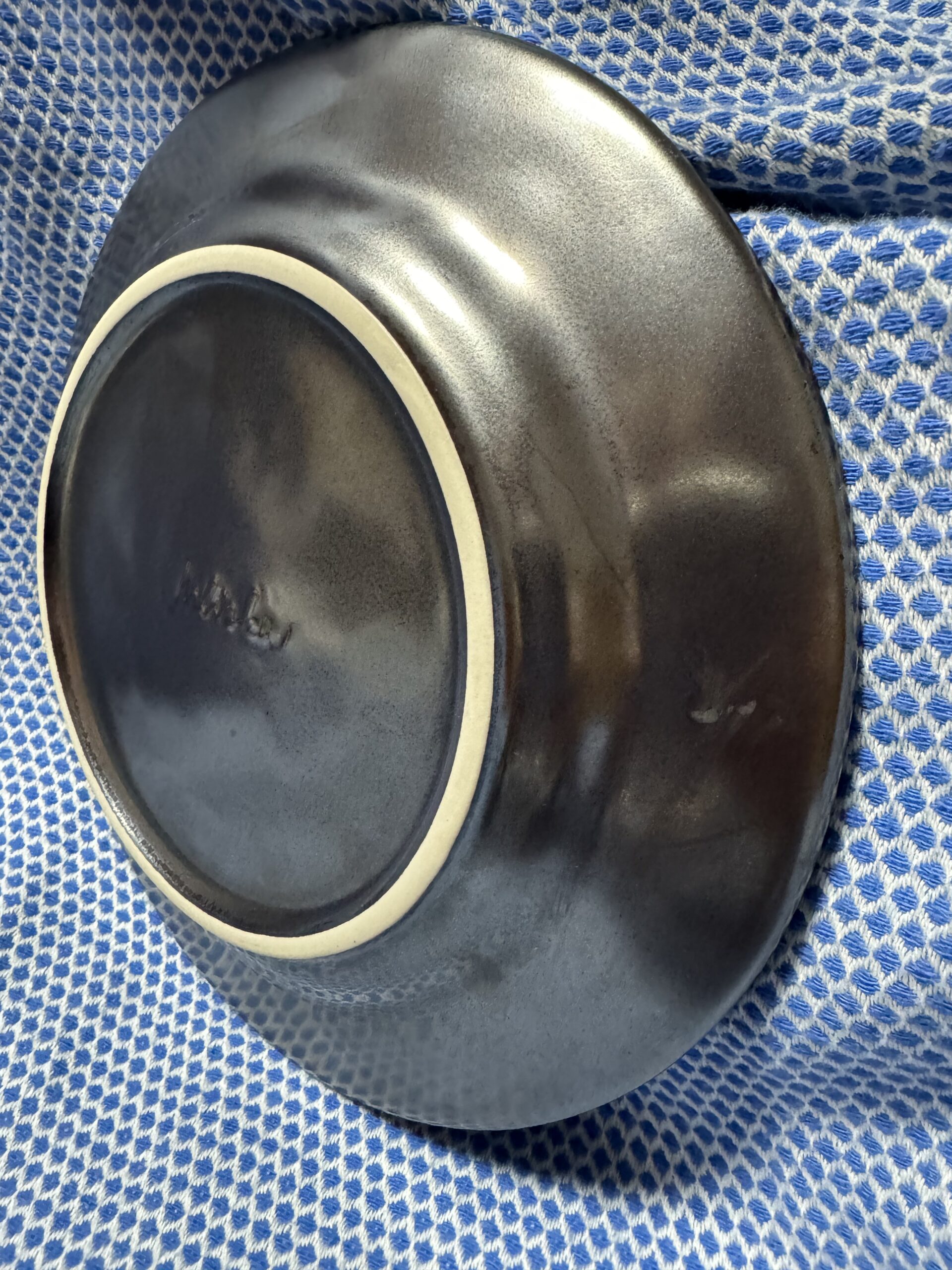
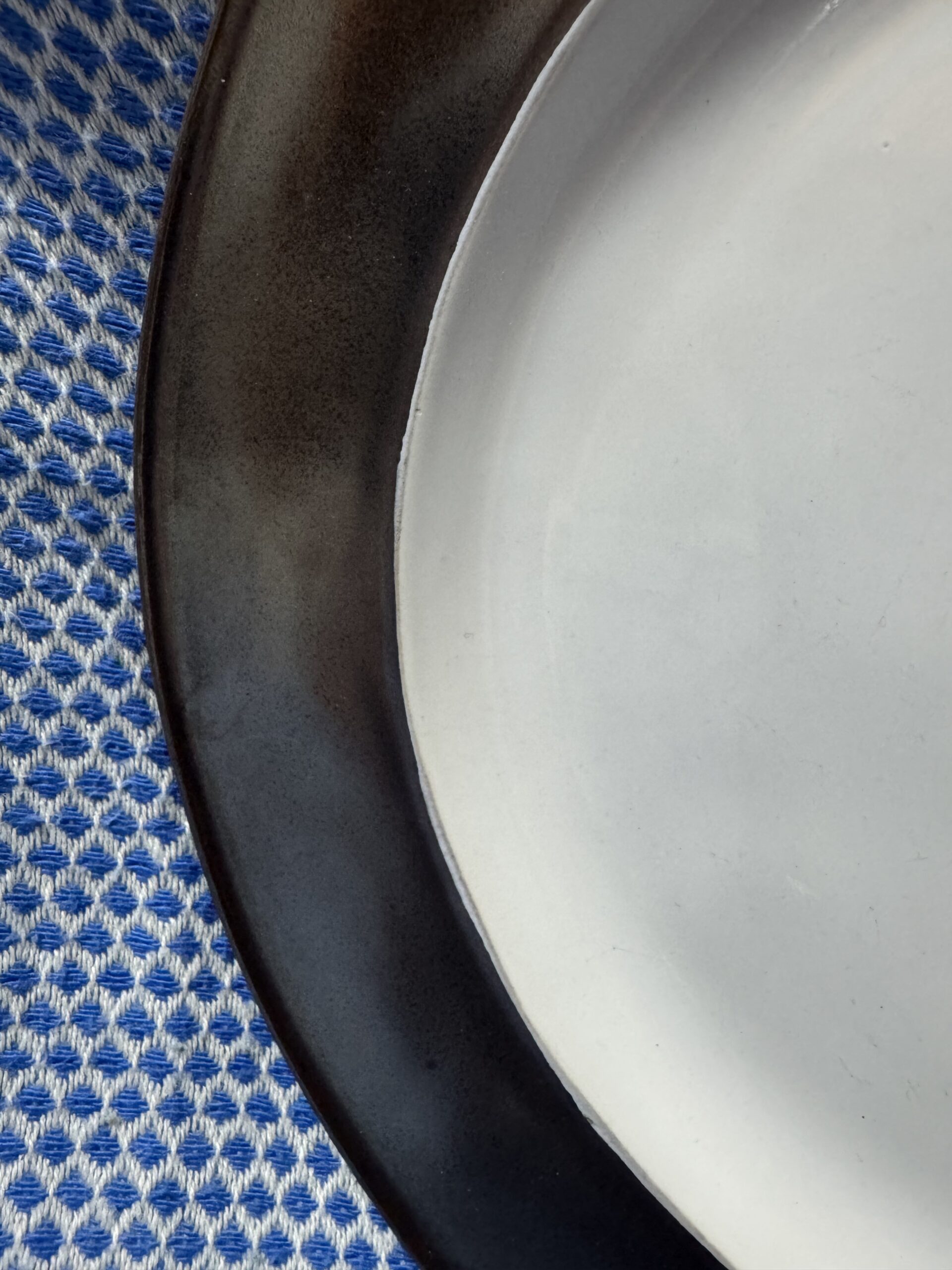
Never Miss an Important Article Again!
Join our Email List


